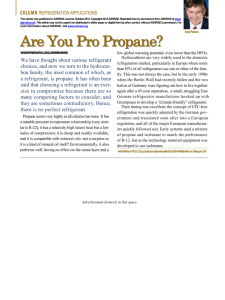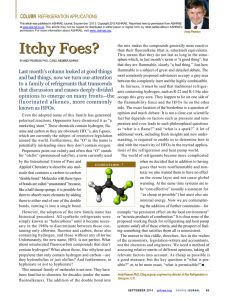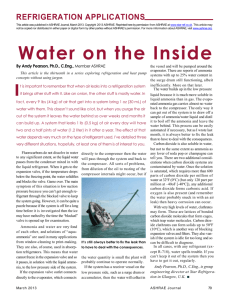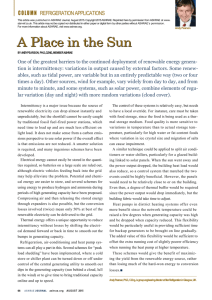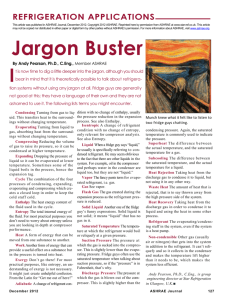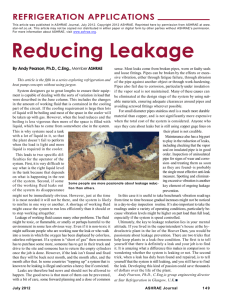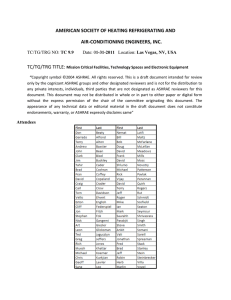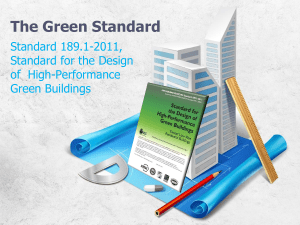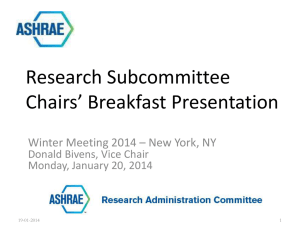How Low Can You Go?
advertisement
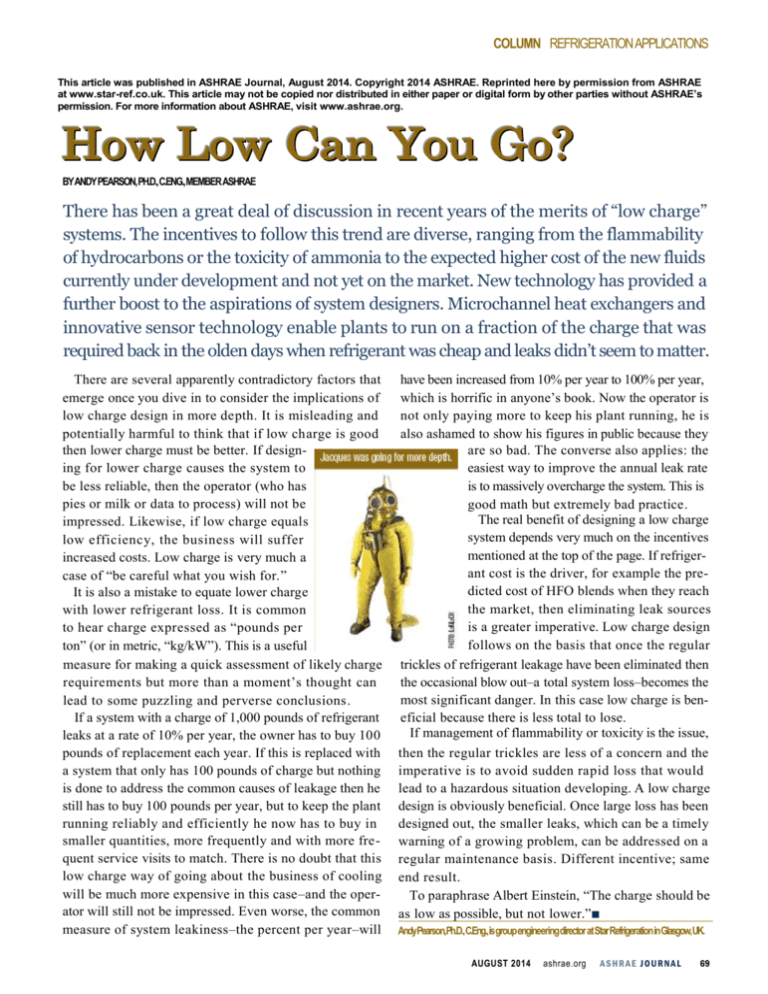
COLUMN REFRIGERATION APPLICATIONS This article was published in ASHRAE Journal, August 2014. Copyright 2014 ASHRAE. Reprinted here by permission from ASHRAE at www.star-ref.co.uk. This article may not be copied nor distributed in either paper or digital form by other parties without ASHRAE’s permission. For more information about ASHRAE, visit www.ashrae.org. How Low Can You Go? BY ANDY PEARSON,PH.D.,C.ENG.,MEMBER ASHRAE There has been a great deal of discussion in recent years of the merits of “low charge” systems. The incentives to follow this trend are diverse, ranging from the flammability of hydrocarbons or the toxicity of ammonia to the expected higher cost of the new fluids currently under development and not yet on the market. New technology has provided a further boost to the aspirations of system designers. Microchannel heat exchangers and innovative sensor technology enable plants to run on a fraction of the charge that was required back in the olden days when refrigerant was cheap and leaks didn’t seem to matter. There are several apparently contradictory factors that emerge once you dive in to consider the implications of low charge design in more depth. It is misleading and potentially harmful to think that if low charge is good then lower charge must be better. If designing for lower charge causes the system to be less reliable, then the operator (who has pies or milk or data to process) will not be impressed. Likewise, if low charge equals low efficiency, the business will suffer increased costs. Low charge is very much a case of “be careful what you wish for.” It is also a mistake to equate lower charge with lower refrigerant loss. It is common to hear charge expressed as “pounds per ton” (or in metric, “kg/kW”). This is a useful measure for making a quick assessment of likely charge requirements but more than a moment’s thought can lead to some puzzling and perverse conclusions. If a system with a charge of 1,000 pounds of refrigerant leaks at a rate of 10% per year, the owner has to buy 100 pounds of replacement each year. If this is replaced with a system that only has 100 pounds of charge but nothing is done to address the common causes of leakage then he still has to buy 100 pounds per year, but to keep the plant running reliably and efficiently he now has to buy in smaller quantities, more frequently and with more frequent service visits to match. There is no doubt that this low charge way of going about the business of cooling will be much more expensive in this case–and the operator will still not be impressed. Even worse, the common measure of system leakiness–the percent per year–will have been increased from 10% per year to 100% per year, which is horrific in anyone’s book. Now the operator is not only paying more to keep his plant running, he is also ashamed to show his figures in public because they are so bad. The converse also applies: the easiest way to improve the annual leak rate is to massively overcharge the system. This is good math but extremely bad practice. The real benefit of designing a low charge system depends very much on the incentives mentioned at the top of the page. If refrigerant cost is the driver, for example the predicted cost of HFO blends when they reach the market, then eliminating leak sources is a greater imperative. Low charge design follows on the basis that once the regular trickles of refrigerant leakage have been eliminated then the occasional blow out–a total system loss–becomes the most significant danger. In this case low charge is beneficial because there is less total to lose. If management of flammability or toxicity is the issue, then the regular trickles are less of a concern and the imperative is to avoid sudden rapid loss that would lead to a hazardous situation developing. A low charge design is obviously beneficial. Once large loss has been designed out, the smaller leaks, which can be a timely warning of a growing problem, can be addressed on a regular maintenance basis. Different incentive; same end result. To paraphrase Albert Einstein, “The charge should be as low as possible, but not lower.”■ AndyPearson,Ph.D.,C.Eng.,isgroup engineeringdirector at Star Refrigeration inGlasgow,UK. AUGUST 2014 ashrae.org ASHRAE JOURNAL 69


